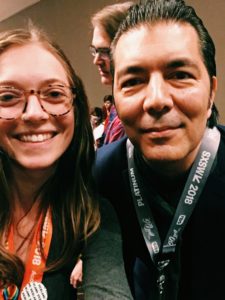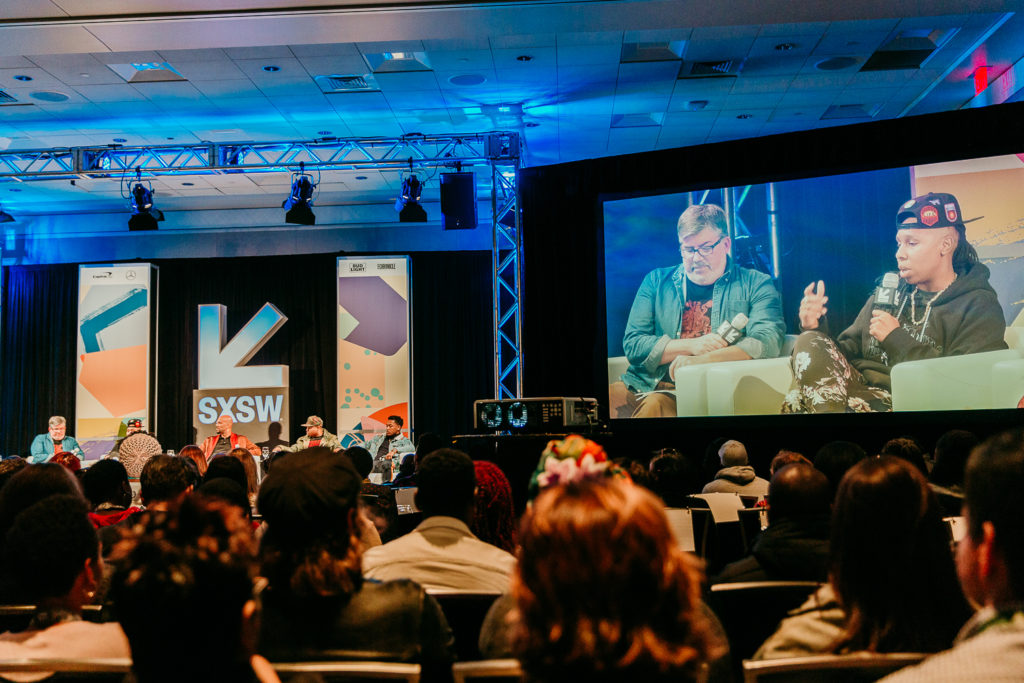Designers Who Broke the Internet

John Couch is the Vice President of UX & design at Hulu, and he served a dual role as speaker and interviewer during the Designers Who Broke the Internet Panel. He was accompanied by Tina Koyama, product design manager at Twitter, and Jill Nussbaum, the product design manager of Instagram. The name for their panel stemmed from a conversation these speakers had about change. They have all experienced extreme change within their own respective companies, and all of their companies are in the spotlight as of late.

With all of their changes, they first started by doing proper research. They held dozens of meetings, performed countless tests, and were open to feedback from not only their employees, but the consumers as well. They also took the time to prepare their employees for the potential shock that often comes with major changes within a company. They were well aware, and also open to, criticism and other feedback from users. For example, Instagram provides a test version of their app to all of their employees so they can test out new features, and put themselves in the shoes of the consumer in order to visualize these potential new changes. It’s very important for designers to think about the end to end experience for the user.
You don’t want to over index on the super positive or super negative [feedback]. The truth is somewhere in between.” -John Couch
Couch, Koyama, and Nussbaum all agreed that being fully invested in the design culture of your company is incredibly important to get your employees invested too. They each have their own versions of events to get to know their employees on a more personal level and learn about what they’re involved in within the company. Koyama says that scaling design systems are key to ultimately bridging the gap between engineering and design.
Featured Session: The Chi

Although I haven’t finished watching Lena Waithe‘s new series on Showtime, The Chi, but I knew I had to get into this panel and learn more about it. Like Waithe, Common is also an executive producer, and he sat on the panel as well. The Chi isn’t like other shows on Showtime, and Waithe was particularly inspired to make this show because of real people in Chicago. She says The Chi is a new way to show black people, outside of typical characters that are normally played on other television series. They showed various clips from season one and commented on each one to discuss how the show sets itself apart from other similar tv shows.
This is something for the culture.” – Jacob Latimore
Common was drawn to the series because it tells stories about black lives that people haven’t seen before. It breaks racial barriers by bringing people into their communities, their churches, in order to say that they’re just like other people. “Lena is a visionary and that’s what I wanted to be a part of,” he said. He commented on how viewers can see the beauty and the pain in black men, and how important it is to show vulnerability among black men. Waithe’s ultimate goal with this series (that has already been renewed for a second season) is to redefine the characters in the show, and to see beyond history. She is trying to push a narrative to dispel myths about black men, even in the truth.
Changing Minds: Behavioral Science for Designers
Matt Wallaert, Steph Habif, and David Ngo, all work in behavioral sciences. Wallaert is a chief behavioral officer (one of three), Habif is the senior director of behavioral sciences at Tandem Diabetes Care, and Ngo is a behavior designer at Behavior Delta. They all collaborated to share their thoughts on how designers need to approach behavioral science in order to connect with clients more effectively. Ngo has four pieces of advice, all existing within the same framework, to making a successful design: use the Fogg Behavior Model, mimic the psychological experience as close to the real thing as possible, keeping things simple changes behavior long term, and design for the human connection instead of just trying to sell a product to someone.

Each panelist had a different framework of approaching behavioral science and design, and they all related to doing proper research. It’s imperative to gather as much research as possible so you can effectively design. Wallaert says that you have to be a designer, as well as a scientist. With these two skills, it will be easier to build client trust in order to design what is right for them. Habif’s advice is to be as specific as possible with your methods and ideas, that way designers will know exactly what type of design or product you’re looking to create.
